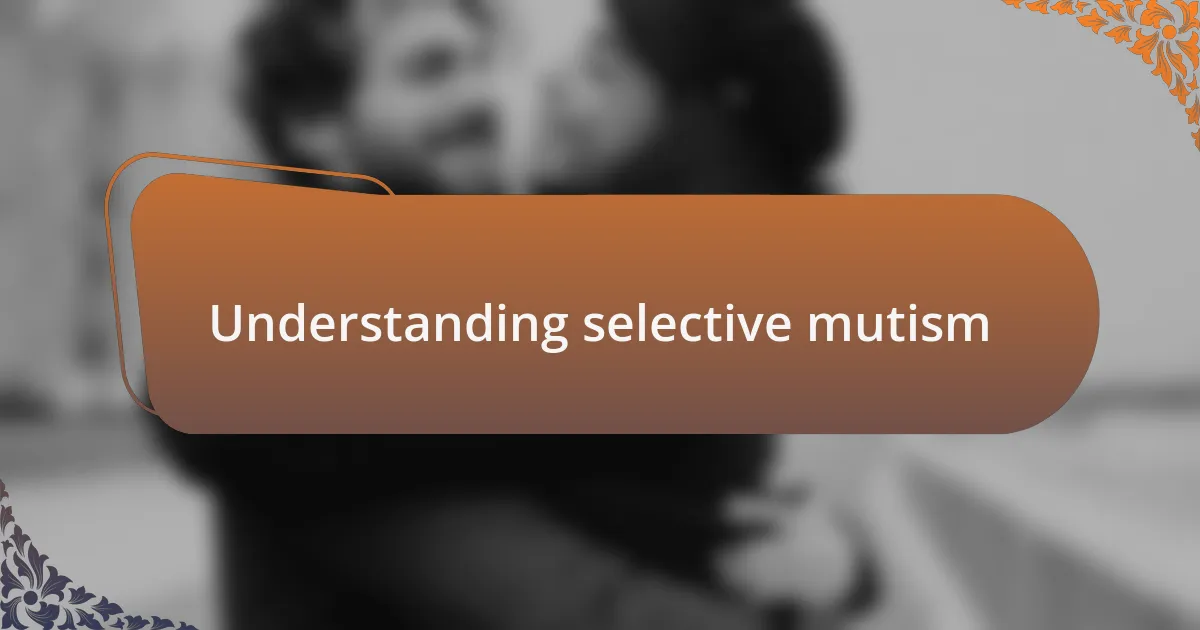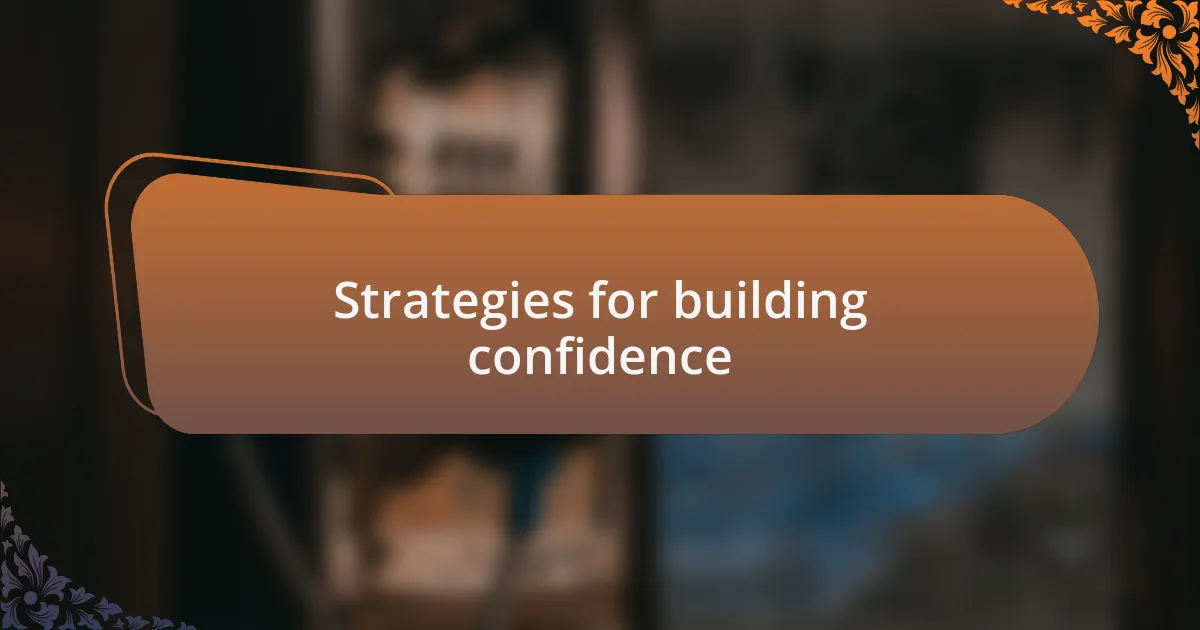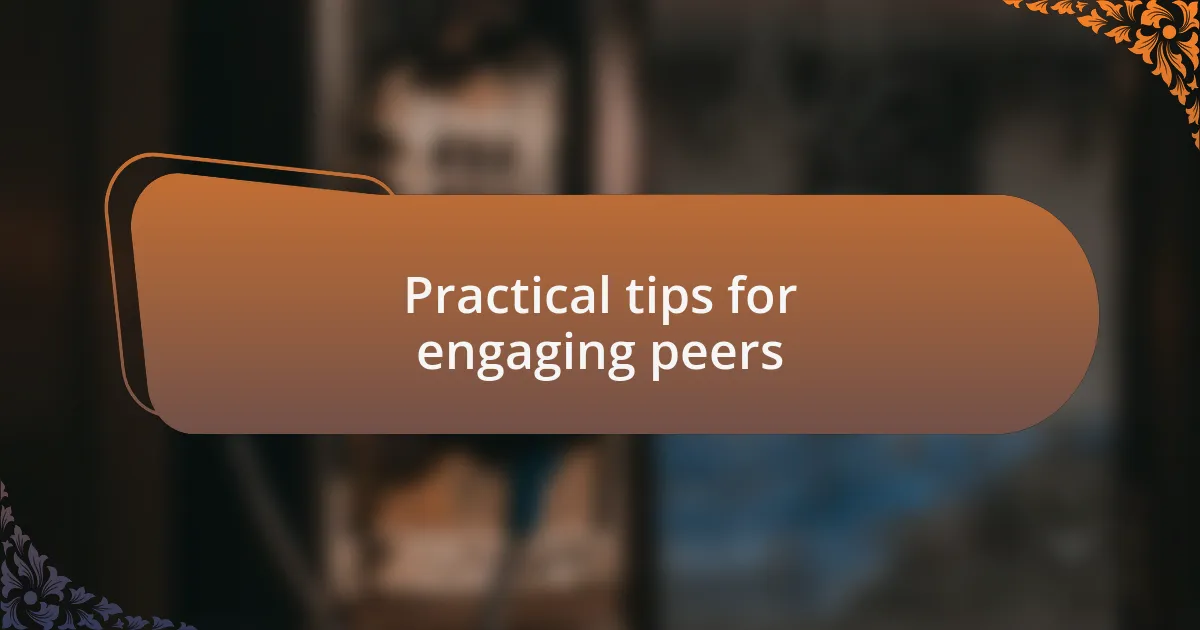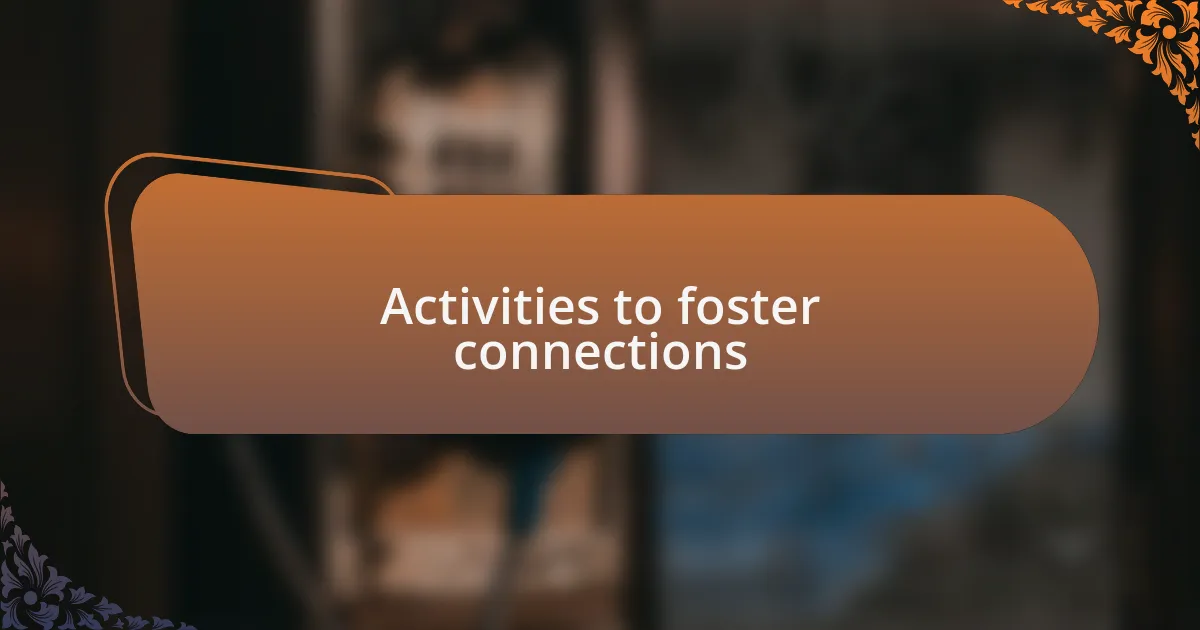Key takeaways:
- Selective mutism is a complex anxiety disorder that hinders verbal communication, especially in social situations, requiring understanding and supportive environments.
- Peer connections and relationships are vital for individuals with selective mutism, as they foster emotional support and create safe spaces for practice.
- Engaging in small interactions, role-playing, and celebrating successes can build confidence in those experiencing selective mutism.
- Participating in shared activities, volunteering, and storytelling helps foster connections and creates a deeper sense of community among peers.

Understanding selective mutism
Selective mutism is more than just a reluctance to speak; it’s a complex anxiety disorder that often manifests in social situations. I remember a time in middle school when I would freeze up in class, feeling as if all eyes were on me, paralyzing my ability to speak even when I had something to contribute. Have you ever felt that overwhelming pressure in a seemingly casual conversation?
This condition typically emerges in childhood and can persist into adolescence or adulthood if not properly addressed. While it’s important to note that selective mutism primarily affects verbal communication, the emotional weight it carries can be even more significant. I once felt trapped in my silent world, yearning to engage but fearing judgment, which only deepened my isolation.
Understanding selective mutism requires recognizing both the child’s experience and the underlying anxiety that fuels it. I often wonder how many conversations went unspoken during my quietest days. It’s a poignant reminder of how crucial it is to create supportive environments, where individuals feel safe to express themselves in their own time.

Importance of peer connections
Peer connections play a vital role in overcoming the challenges of selective mutism. I recall sitting on the playground, wishing to join in on games but feeling invisible among the laughter and chatter. Those moments underscored how essential it is to form bonds with peers, as even small gestures of inclusion can help break the silence that feels so isolating.
When I eventually forged a friendship with someone who understood my struggles, everything changed. Having a peer who could empathize created a safe space for me to practice speaking, gradually easing my anxiety and boosting my confidence. Isn’t it incredible how just one understanding friend can make a world of difference in a challenging journey?
Building connections with peers not only fosters communication but also offers emotional support and validation. I often found that shared experiences created a sense of belonging, a reminder that I wasn’t alone in my silence. How often do we overlook the power of one good friend? For anyone navigating selective mutism, those connections are essential stepping stones toward self-expression and personal growth.

Strategies for building confidence
One effective strategy for building confidence is to engage in small, manageable social interactions. I remember when I started by simply greeting classmates when passing in the hallway. Initially, it felt daunting, but over time those brief exchanges transformed into more meaningful conversations, showing me that every small step counts in overcoming the larger challenge of selective mutism.
Another powerful approach is to use role-playing activities. I found that practicing conversations with a trusted friend made a huge difference. We would simulate different social situations, from ordering food to chatting after class. This technique allowed me to experiment in a supportive environment, making the actual interactions feel less intimidating. Isn’t it amazing how rehearsal can prepare us for real-life scenarios?
Lastly, celebrating each little success plays a crucial role in building confidence. Each time I spoke out loud, whether it was answering a question in class or joining a group discussion, I took a moment to acknowledge that achievement. Reflecting on those successes, no matter how small, created a positive feedback loop that reinforced my willingness to engage with others. What small victory could you celebrate today?

Practical tips for engaging peers
One practical tip for engaging with peers is to find shared interests. I once bonded with a classmate over a mutual love for a particular book series. We started by exchanging recommendations and eventually met up to discuss our favorite characters. Isn’t it remarkable how common interests can pave the way to deeper connections?
Another effective strategy is to initiate group activities. I remember organizing a small game night among friends. Initially, I was nervous about taking the lead, but the excitement of the game brought everyone together effortlessly. This experience taught me that sometimes, creating a fun environment encourages people to open up and interact more freely.
Lastly, using open-ended questions can be a game-changer. I often found that asking my peers about their weekend plans or favorite hobbies led to engaging conversations. When I shifted my focus from myself to showing genuine interest in others, it made interactions less intimidating and helped me connect more authentically. Have you tried asking questions that invite others to share their stories?

Activities to foster connections
Participating in team sports can work wonders for fostering connections. I recall joining a local soccer team when I was feeling particularly withdrawn. The shared laughter and camaraderie during practice helped break down my barriers and gradually built friendships, proving that teamwork can create a sense of belonging that transcends words. Have you considered how engaging in physical activities might help you feel more connected to others?
Art projects can also serve as a bridge to connect with peers. I remember collaborating with classmates on a mural for our school, which not only allowed us to channel our creativity but also sparked meaningful conversations about our artistic visions. Working alongside others in a creative setting can be incredibly liberating. Isn’t it fascinating how shared creativity can foster an unspoken understanding among individuals?
Volunteering as a group is yet another powerful way to build relationships. I participated in a community clean-up event with a few peers, and it was amazing to see how working together for a common cause broke the ice. We shared stories while picking up litter, and it transformed what could have been a mundane task into a bonding experience. Have you considered how giving back can create connections that last beyond the moment?

Sharing experiences and stories
Sharing personal experiences can be a powerful way to connect with peers. I once attended a support group where we took turns sharing our journeys with selective mutism. Hearing others open up about their fears and triumphs created an atmosphere of understanding that made me feel less alone. Have you ever noticed how vulnerability can draw people closer together?
Storytelling can also foster a deeper sense of community among people facing similar challenges. I remember recounting a moment when I successfully spoke up in class for the first time – the pride I felt was palpable in the room, and others were inspired to share their own milestones. Isn’t it remarkable how narratives, even those filled with anxiety, can empower us and spark hope?
Moreover, sharing our stories might just help others find their voice. I once wrote an article about my experiences, which sparked a dialogue with someone I thought would never open up. Their feedback revealed that my words had resonated with them in a way I hadn’t expected. Don’t you think that the act of sharing could be the key to mutual understanding and support?